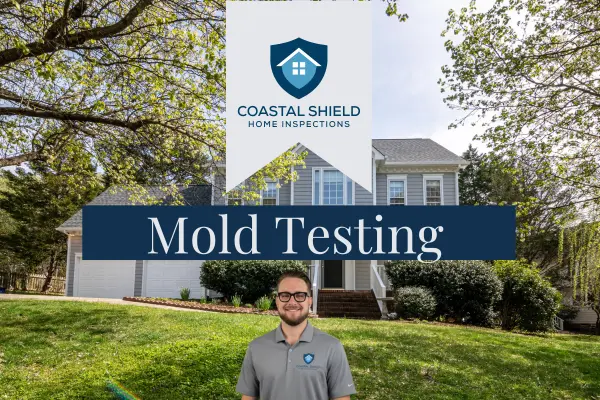
A Santa Barbara Homeowner's Guide: When to Test for Mold
Uncover the truth about your indoor air quality with professional, lab-verified mold testing.
By Louis Oconnor, Certified Master Inspector
Key Signals: 5 Scenarios That Warrant Mold Testing
Mold is a natural part of our environment, but it shouldn't be growing in your home. In Santa Barbara's coastal climate, a minor leak can quickly lead to a major problem. Professional mold testing is the only way to move from suspicion to certainty. Here are the five key scenarios where testing is a smart decision.
1. After a Water Leak or Flood
Anytime a roof, plumbing, or window leak has occurred. Even if the area seems dry, moisture can be trapped behind walls, providing a breeding ground for mold.
2. Persistent Musty Odors
If you notice a damp, earthy, or "basement" smell that you can't locate, it's a classic sign of hidden mold growth in a crawlspace, attic, or wall cavity.
3. Visible Stains or Suspected Growth
Discoloration on drywall, dark spots on wood framing, or fuzzy growth on baseboards are clear indicators. Testing identifies the type and concentration of mold present.
4. During Escrow Due Diligence
If a home inspection reveals high moisture readings, a history of leaks, or musty odors, mold testing provides objective, lab-verified data for negotiation.
5. Unexplained Health Symptoms
If you or your family experience persistent allergy-like symptoms, headaches, or respiratory issues that seem to improve when you leave the house, it's worth investigating the indoor air quality.
Santa Barbara's Mold Hotspots: Where We Typically Find Issues
Our local climate and building styles create predictable problem areas. We use thermal cameras and moisture meters to investigate these hotspots thoroughly.
- Crawlspaces: Poor drainage and our humid marine layer often lead to damp, musty crawlspaces with surface mold on the framing.
- Behind Stucco Siding: Wind-driven rain can push water past unsealed windows and penetrations, trapping it behind stucco where it can't dry out.
- Under Tile Roofs: As the waterproof underlayment beneath tile roofs ages and fails, slow leaks can saturate attic insulation and framing for years before being noticed inside.
- Bathrooms and Attics: Poor ventilation is a primary cause of mold growth, leading to issues around bathroom fans and in poorly ventilated attic spaces.
Our Process: From Moisture Mapping to Lab Results
Professional mold testing is a systematic process designed to give you clear, actionable answers.
- Visual Inspection & Moisture Mapping: We first identify potential problem areas using our eyes, expertise, and tools like thermal imagers and moisture meters.
- Strategic Sampling: Based on our findings, we take air and/or surface samples. This always includes a baseline air sample from outdoors to compare against the indoor air.
- Certified Lab Analysis: All samples are sent under a strict chain of custody to an accredited laboratory, which identifies the mold species and spore concentrations.
- Actionable Report: You receive a report that's easy to understand, explaining the lab results and providing clear, practical next steps for remediation or prevention.
Frequently Asked Questions
Your top questions about professional mold testing, answered.